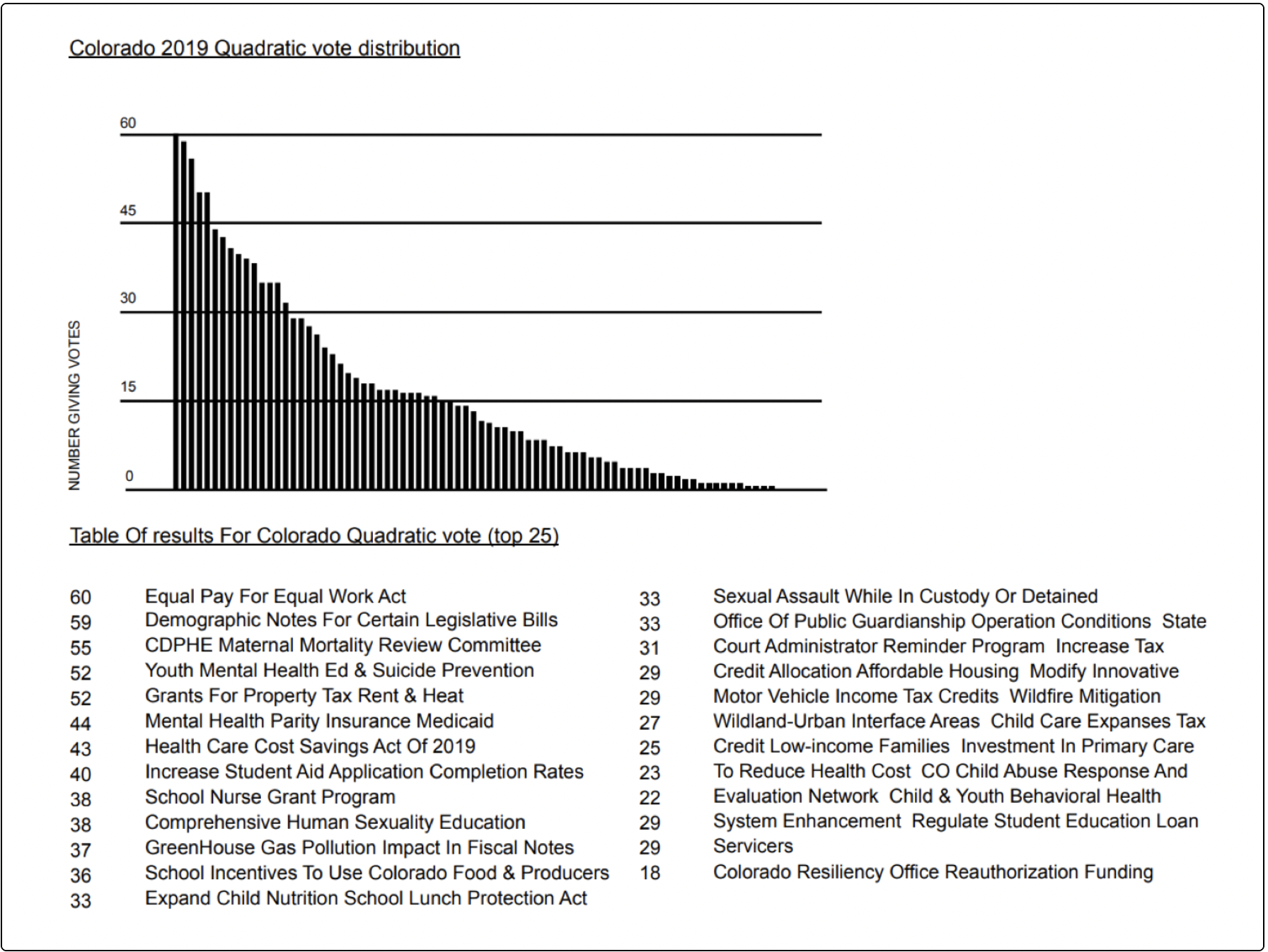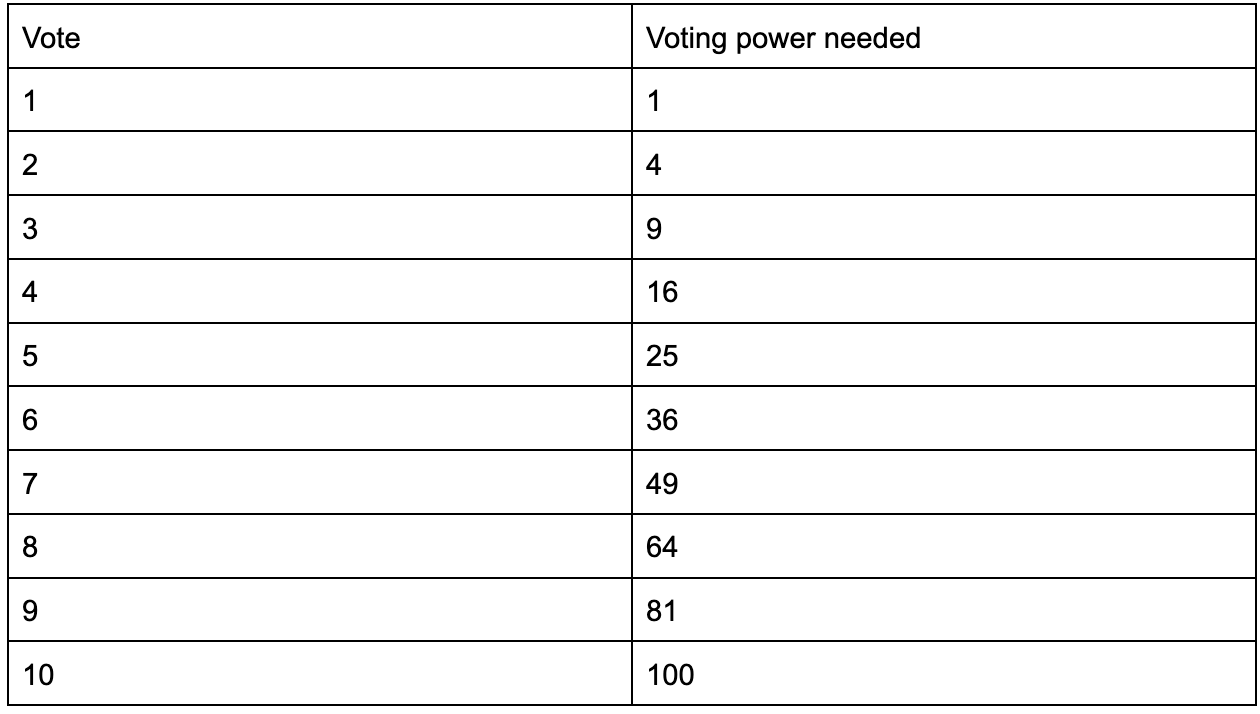One of my previous posts introduces quadratic voting in a more practical aspect. This piece will dive deeper into quadratic voting, acting more as a thought piece than a practical one.
Context, Context, and Context
Context is essential for voting in general. Still, to signify your conviction in a voting method like QV, it is paramount that a voter understands the distinctions between each voting option. In the current system, quadratic voting is a great tool when there are various options, and the result is a narrowed-down list of options for moving forward. An example could be a DAO deciding on essential topics for them to focus on in the next quarter.

However, for individuals to vote in these situations, they need to have as much context as possible. Otherwise, voters will vote for the options they are familiar with. One way could be for specialized individuals to write a short overview explaining the reasoning behind a voting option with further links. Hence, voters have a basic overview of all the possibilities.
Reputation
The reputation of a voter helps individuals or token holders identify who are trustworthy individuals. Quadratic voting signifies a voter's conviction to specific choices, making it more helpful to analyze other voting mechanisms, and in doing so, one can build a reputation among voters.
If voters continuously vote in a certain way:
- Split votes equally (The Even Steven)
- Vote for one choice (The Top Heavy)
- Varying weights for each vote (The Informed)
Using this information, we could assign badges to voters and delegates so people can easily distinguish how that individual votes, making it easier to delegate voting power.
Weighted Power
Following reputation, those individuals who are long-term contributors and trusted individuals could increase their voting power by X amount since their opinions are more trusted and valued. Weighted power can also be applied to specific roles. This means that instead of trusted individuals getting 100 votes like everyone else, their votes are increased by a factor of x1.1 to get 110 votes instead.
The numbers are arbitrary to showcase the power of weighted power. In this case, it's a 10% increase in votes which equals just over three votes, which might seem minor, but it still has an influencing factor.
Maybe weighted power is unnecessary since it ruins the equality of VQ, but it is a concept worth exploring.
Delegation in QV
Voter apathy is one of the most significant issues in DAO governance. With the failure of DAOs to capture a voter participation rate of 5%, one can imagine the danger of a lack of participation. A hostile takeover, treasury liquidations, and much more.
Quadratic voting has been tested on a small group of well-informed individuals like in Optimism retroactive public funding or Colorado voting. Employing this mechanism in a DAO will be much harder than anticipated as DAOs can have many more voters. Not only that, but a lack of understanding or time commitment might influence a casual voter to make the easy choice of splitting their votes equally. This isn’t a good or bad tactic; it simply does nothing. If each vote goes up by an equal amount, it is like nothing happened.
The most common issue with voting is that it takes too much time and happens too often. QV faces similar problems.
Delegating the artificial tokens used in quadratic voting would reduce the need for voters to participate and can trust more informed individuals to have a say. This mechanism could work similarly to the delegation systems we see at Maker, ENS, and others, except a user, would delegate their “artificial” voting tokens to another individual.
However, there are some drawbacks, like delegates gaining too much power. With specific limitations, one could implement an upper bound of delegations that a delegate can receive without centralizing a protocol. Reaching an equilibrium of increasing governance participation and centralizing a protocol will be an ongoing mission within decentralized governance. However, exploring how delegation in QV could tackle this will be interesting.
In doing so, a protocols token is separate from governance and instead focuses on the protocol's success. Delegates can also be compensated for their work… because delegates deserve compensation! Using various factors such as; (i) individuals delegated, (ii) voting participation, and (iii) forum participation can help decide a delegate's pay.
User Experience
User experience is key to the adoption of quadratic voting. We can’t expect everyone to remember a quadratic equation from school, so implementations and explanations should be simple. One of the most powerful tools for adoption is simplicity, and QV needs that more than other voting methods.
Simulating this experience for individuals would help adoption as voters have an opportunity to become acknowledged with the format. Due to the steep learning curve, people are already deterred from getting involved in DeFi and DAOs, so we must guide QV voters through the journey to make it as simple as possible.

Keep in mind that QV adds another layer of difficulty to governance. Implementations such as “sliders” highlighting votes and voting power would help. This diagram above is an excellent idea of what it can look like, albeit with fragmented votes, it will be more complicated.
Fragmented votes
The quadratic formula only works backward to get the whole votes.

Using other numbers like 27 would get fragmented votes like 5.19, which can complicate the user experience. Tallying votes face no difference, but voters might feel deterred by this experience as it is unusual to vote in fragments.
Once again, this links back to the UX, where we must make a distinction between whole and fragmented votes. Explanations of these slight distinctions will help the voters understand what is happening in the voting process.
A simulator and a quadratic formula calculator could be presented with each voting situation to help voters understand how their votes would turn out in different scenarios before locking in any votes.
Closing thoughts
Quadratic voting is an interesting mechanism that tackles many issues in the commonly used model of one-token-one-vote, but it has many drawbacks of its own. With it being a more complicated voting mechanism, it brings other problems, such as comprehension and adoption.
In saying that, QV is in its early stages of exploration, and I look forward to experimenting further with it and exploring some of the ideas outlined in the post.